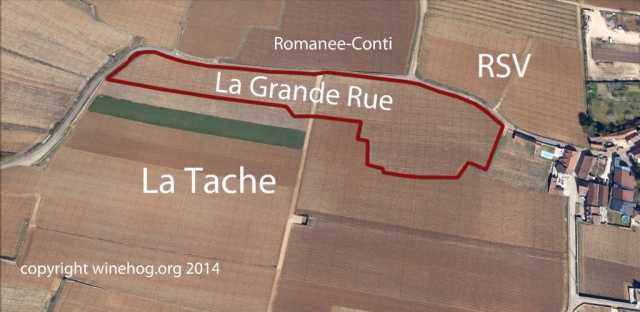I don’t see that this question has ever been covered in it’s own thread, and it’s something I see a lot in sales pitches. First the question: Does quality tend to “bleed” into surrounding (and, particularly, directly adjacent) properties?
Now the set up:
I got the following offer from B-21 private sales this morning:
They call the place “50 Ares of Grace;” a precise, pristine, unbelievably coveted, treasured plot of land that’s so small it covers less than an hectare – 1.25 acres to be precise. The parcel very literally abuts the vines whose fruit renders the most prestigious wines of Bordeaux. You’ve heard that before, “Our wine neighbors Chateau ‘so-and-so’,” only to discover, in fact, the true distance between the so-called neighbors.
Allow me to illustrate:
Yes, that’s Chateau Margaux on the right, Brane Cantenac abutting to the left. Squarely between, the sections isolated for better viewing (on the ground there is no separation) lies the “Ares of Grace” – the vineyard of L’Aura de Cambon, a tiny property from the owners of Cambon la Pelouse, “Serious stuff,” in the words of Suckling – “Brilliant,” in the eyes of Parker.
The components are 50% Cabernet, 50% Merlot, and the yields are tiny – guaranteed thanks to a vine density of 8,000 vines per hectare (equaling the density found at most of the 1st Growths). All vinification follows the rules of gravity, with malolactic fermentation taking place in 100% new, French barrique. New French oak is also employed for the aging process, and the results – less than 500 cases per year – are simply stunning.
You will taste this wine, recalling its pedigreed neighbors, and wonder – in amazement – how they are able to offer such opulence for so little coin.
OWC 6
2009 Château L’Aura de Cambon, Margaux
(89-91) The talented Claude Gros, who does such a great consulting job at many Bordeaux properties, has fashioned a brilliant 2009 sleeper of the vintage from this tiny estate. A dense purple color and copious aromas of blackberries, blueberries, and flowers are found in this medium to full-bodied, pure, long Margaux. It should drink well for 10+ years.
91 points – Robert Parker, Wine Advocate2009 Château L’Aura de Cambon, Margaux
Opens with dark colors and aromas of fresh blackberry flavors, full bodied and round, the wine ends with ripe dark fruit and black pepper aromatics.
91 points – Jeff Leve, The Wine Cellar Insider750ml: $35
- Compare to its illustrious neighbor @ $1200
Minimum 4. Limit 24.
OWC available for orders in increments of 6 btls. Please specify OWC when ordering.
ETA: Q4 2016.
So how much truth is there to this idea of seemingly osmotic transfer of quality to adjacent properties in Bordeaux, or any region for that matter? I can see the geography of the situation, and I understand that soil and terroir are highly geographical properties. But I had never heard of this Chateau, and there is minimal to no information to be found online except for some of Jeff Leve’s tasting notes and information on his wonderful website. There are otherwise 0 bottles to be found on wine-searcher. I am sure it is due to the minuscule quantity produced, but my original question still lingers – Does quality tend to “bleed” into surrounding (and, particularly, directly adjacent) properties? Is this just a piece of trivia that is really only of interest for marketing, or is there validity to the idea?

